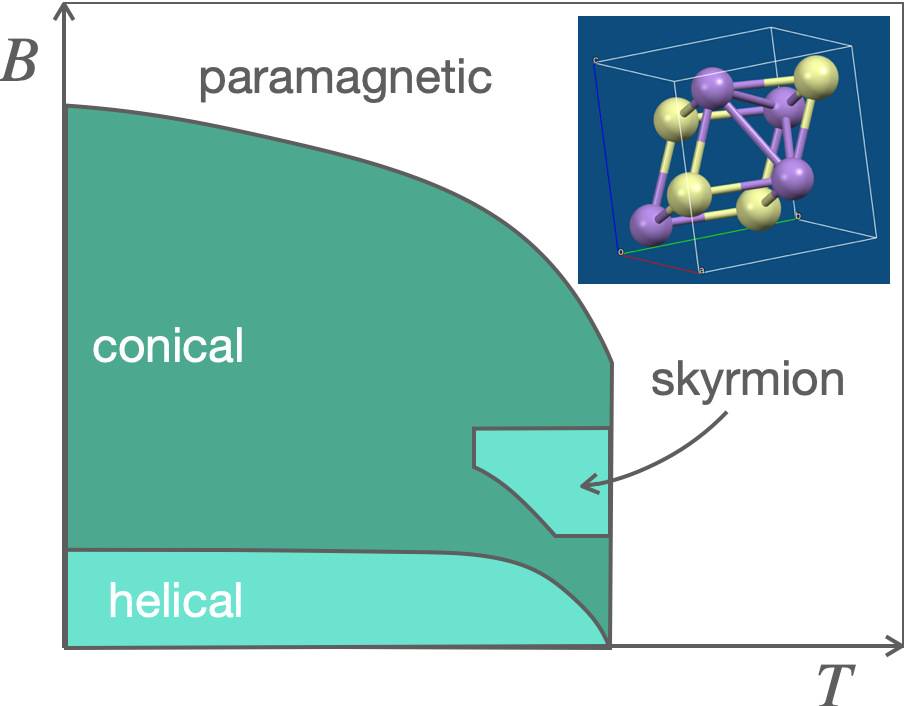Valence Transition in Eu-Intermetallics
In some Europium (EU) intermetallic compounds a temperature- and/or pressure-driven
valence transition occurs which renders the Eu valence from 2+ to 3+, thus changing
its magnetic moment from 7 μB to 0. This valence transition is accompanied by
a pronounced reduction of the unit cell volume. In our research, which is part of the Collaborative
Research Center (CRC TRR288) Elasto-Q-Mat, we focus on
epitaxial thin films of EuPd2Si2 and EuPd3 grown by MBE
and the study of strong coupling effects between electronic fluctuations and the lattice
degrees of freedom, e.g. by way of surface acoustic wave (SAW) attenuation measurements.
Helical magnets are highly fascinating as model systems for complex magnetic ordering which can
exhibit such properties as multiferroicity and the appearance of stable magnetic skyrmions, i.e.
magnetic vortex structures of non-trivial topology. The interplay of the various energy scales
often leads to magnetic ordering, exhibiting a periodicity that is incommensurate with the
lattice. MnSi, a non-centrosymmetric itinerant magnet, is a prominent example showing incommensurate
helical order and a magnetic phase diagram that can be strongly modified by thin film specific effects,
such as clamping and strain. We grow epitaxial MnSi thin films by MBE and are particularly interested in
the interplay of the magnetic phases of MnSi and Abrikosov vortex lattices in MnSi/superconductor double-layer structures.

